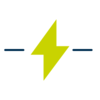- Joined
- 28 May 2020
- Posts
- 6,561
- Reactions
- 12,584
South ustralia has joinrd the Hydrogen Bandwagon.
from The Australian
Depending on how good the storage medium is, it would be an ideal way to use the "spare" electricity generated by solar rooftops and other renewable projects when demand is at an ebb (like in the middle of the day on Sunday when its not too hot for airconditioners ).
Mick
from The Australian
Guess its the only way they can keep a heavily electric dependant industry running.Construction of the world’s largest hydrogen electrolyser facility, to be built in Port Pirie, could begin in little more than a year, with an engineering study into the $750m project under way.
Global commodities company Trafigura, which owns the Nyrstar lead smelter at Port Pirie, and the state government will co-fund a $5m “front end engineering and design” study into building a hydrogen plant next to the current lead smelter.
Trafigura general manager Australia Tim Rogers said the company expected to be in a position to make a final investment decision on the project by the end of 2022, and with approvals in place, construction would start the following year.
The project would create 150-300 jobs during construction and up to 25 ongoing roles, and solidify Port Pirie’s future as an industrial hub, Mr Rogers said.
The project would be built out in stages, with the full-scale plant able to produce 100 tonnes per day of green hydrogen from a 440 megawatt electrolyser – a device which splits water into hydrogen and oxygen using renewably-sourced energy.
Depending on how good the storage medium is, it would be an ideal way to use the "spare" electricity generated by solar rooftops and other renewable projects when demand is at an ebb (like in the middle of the day on Sunday when its not too hot for airconditioners ).
Mick
























